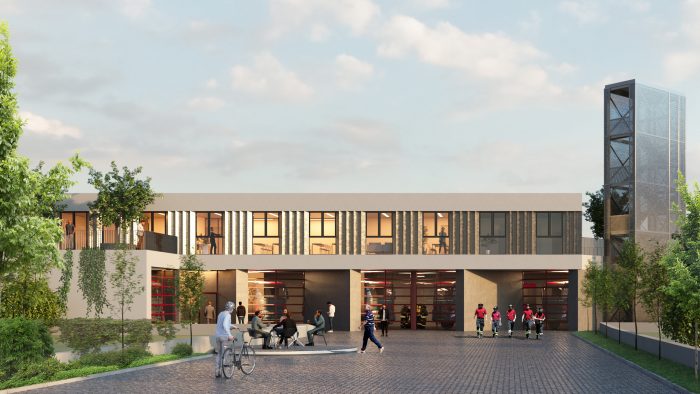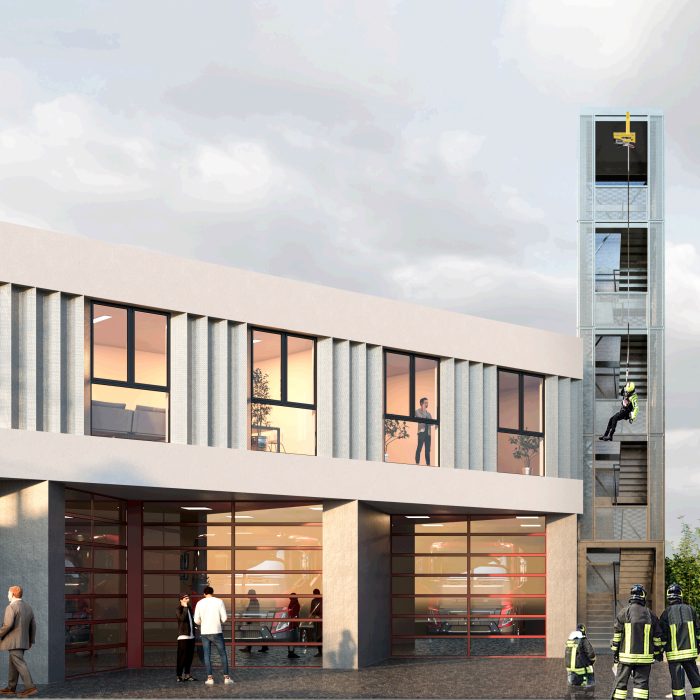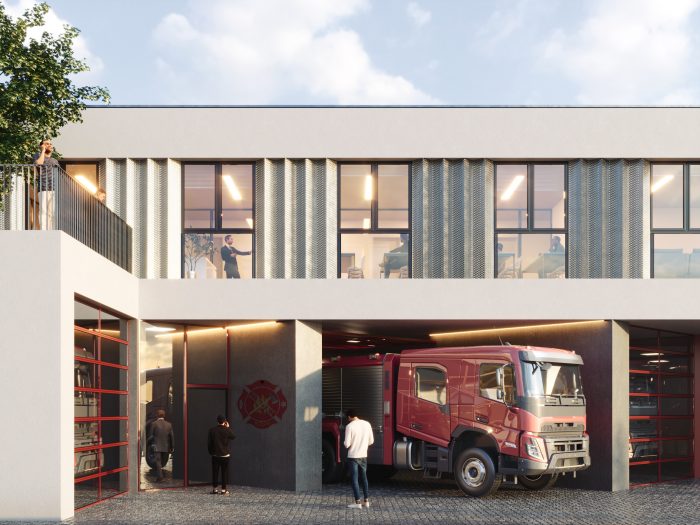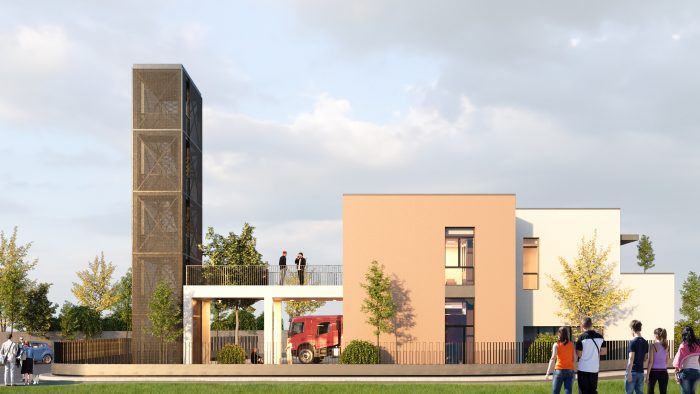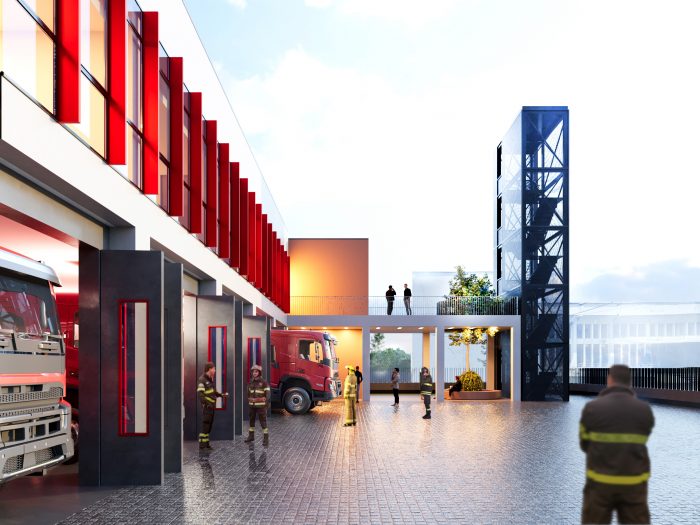Të dhëna mbi projektin
-
Studio
Studio Rebus
-
Faqja e Studio
-
Arkitekti
Ilirjana Bozo
-
Statusi
Project Idea
-
Viti i ndërtimit
2022
-
Sipërfaqja
3068 m2
Përshkrimi
The proposed intervention in the selected fire stations in Lezha and Fier through the improvement of physical infrastructures, made possible by the contribution of the Government of Poland and developed in partnership with UNDP, is fully in line with the national spirit for increasing the effectiveness and performance of the decentralized fire service.
The overall objective of the project is to contribute to the modernization, raising of standards and strengthening of the operational and response capacities of the Albanian Fire Protection and Rescue Service through support for municipal fire protection and rescue services.
Fire station of Fier Municipality
The fire station of Fier Municipality is planned to be developed on two floors. The first floor is mainly for fire engines and the necessary facilities for their normal operation. On the second floor there are areas and functions for the personnel and the general activity of the fire station. The building has a north-south orientation, creating a wide yard on the western side of the plot, a yard necessary for the exit and entry of cars. The car exit is designed on the west side of the square with direct access to the main road. The tower is located in the southern part of the square.
The fire engines and their auxiliary facilities are located on the ground floor. The main entrance of the fire station is provided on the ground floor in the western part of the building. The height of the ground floor is 4.76 m.
The administrative functions of the station are located on the first floor. The functions are positioned on both sides of a corridor and are lit from east and west. The control room and offices are located near the stairs and the elevator, while the rest area is at the end of the corridor in the quietest area. The height of the first floor is 3.70 m.
The concept is based on finding an intermediate solution which not only accommodates the proposed program but at the same time does not neglect but gives a special value to the implementation of recreational spaces in the facility.
The architectural language will remain simple, built on the space-form-structure dialogue. Movement and route are equally valuable elements in the spatial experience. In functional terms, the organization of spaces is simple. This makes it work well and space users don't have to travel long distances to reach their destination. In any position of the space, the stairs can be easily identified and reached.
Fire station of Lezhë Municipality
The fire station of the Municipality of Lezhë is planned to be developed on two floors. The first floor is mainly for fire engines and the necessary facilities for their normal operation. On the second floor there are areas and functions for the personnel and the general activity of the fire station. The building has a northeast-southwest orientation along the road, creating a wide yard on the north side of the plot, a yard necessary for the exit and entry of cars. The car exit is designed on the north side of the square with direct access to the main road. The tower is located in the western part of the square.
Fire engines and their support functions are located on the ground floor. It is divided into two volumes connected by a corridor. The main entrance to the fire station is also on the ground floor to the west of the building. The connecting corridor between the two volumes marks the main entrance to the fire station.
The administrative functions of the fire station are located on the first floor. The functions are positioned along both sides of a single corridor that has direct light access through north and south. It is divided into two volumes connected by a corridor where the stairs and the elevator are located.
The project researches and proposes the creation of a sustainable relationship of coexistence and co-existence of the proposed program, green spaces and the creation of an urban space which turns into an emancipatory and aesthetic footprint in the territory for the residents.
The concept is based on finding an intermediate solution which not only accommodates the proposed program but at the same time does not neglect but gives a special value to the implementation of recreational spaces in the facility.
Our approach considers the architectural work not as a work that ends with the construction, but as an instrument through which the urban and social fabric is regenerated. Spatial composition turns into a celebration of pure geometry, a stance which emphasizes that the architectural footprint must be articulated, differentiated and marked in that urban context. In the territory in question, the new building will be easily identified. Its geometry, the rhythm of the elements on the facades, the materials and the colors make the function of the building understandable and thus it can turn into a point of reference and orientation for the area.
Public facilities should be treated as elements with a strong impact on an urban scale. In terms of the degree of innovation they bring in form, technology and structure, it is recommended that these objects be qualitatively differentiated from the rest, to become reference points on an urban scale.

